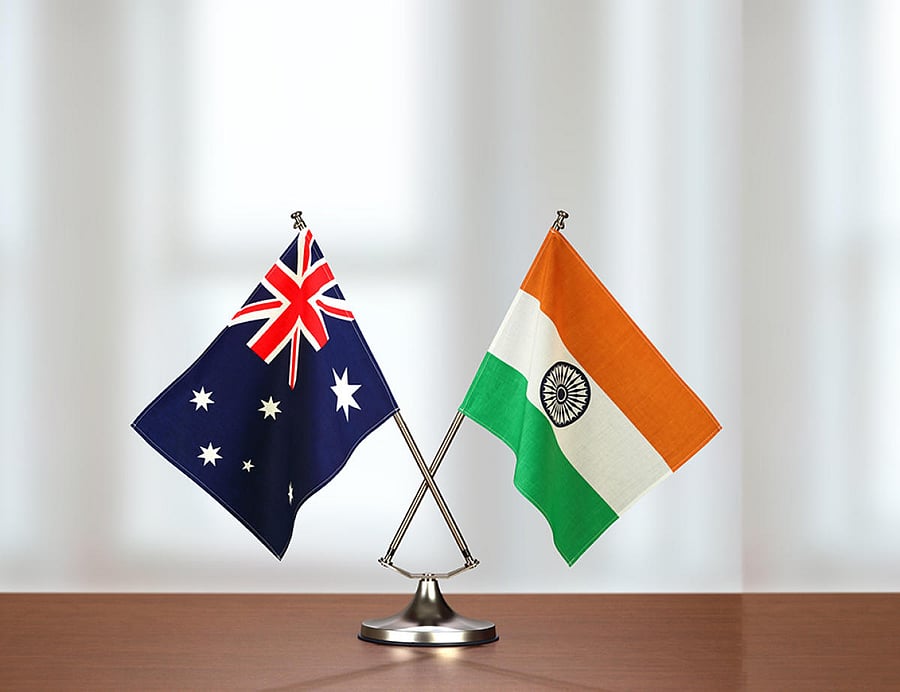
For India, the announcement of Australia’s participation in the annual Malabar naval exercises of 2020 is a deliberate horizontal escalation of the continental border crisis whose present centre of gravity is Ladakh. The Malabar exercises began as an Indo-US bilateral exercise in 1992. In 2015, Japan joined in and India has now overcome its reticence about annoying China and opened the door for Australia. The connection with China’s rise and its strategic misbehaviour is obvious and is part of a larger global countervailing move for stability and balance. For India, the burning question is, what difference can this make to China’s threats on its continental borders. A lot actually
Hypothetically, it is feasible, for China to launch an offensive on the Sino-Indian border any time before the winter or even much later. But India is now signalling that if that happens, it may have to confront the possibility of India opening the maritime front, which is China’s weakest strategic arena. India, hopefully, is no longer ignoring this possibility and is also moving towards enlarging cooperation with other maritime powers in the Indo-Pacific region. Such a foreign policy shift might appear speculative but China’s military exertions in Ladakh have now made it a compulsion and have hopefully demolished the illusions regarding the nature of China’s political ambitions and coercive measures it has adopted, which trumpets the message – ‘I am strong and I will be the boss’.
In all probability, China’s efforts at military coercion may remain limited to salami slicing, with military operations conducted in the layer below the level of war. In most military situations between nuclear powers, the nuclear elephant in the room cannot be ignored. The big fight can at best be threatened, but to deliberately bring it about has unacceptable risks. All political leaders are only too well aware of the nuclear dangers even when they appear to portray strategic behaviour that ignores realpolitik.
The success of the lower form of coercion is limited by the opponent’s ability to withstand strategic and political pain. Post-Doklam, China probably concluded that occasional pressure on the Sino-Indian border will not arrest or slow down the Indian strategic drift towards a coalition that aims to check Beijing’s rise. Wuhan and Mamallapuram were useful to China to buy time for its military preparations as it apprehended that they were insufficient to check the growing proximity between India and the US, as well as other powers of the Quad and powers like France and Germany. This time, therefore, military force has been applied by choosing a geographic area that also brings into the threat dimension the possibility of a two-front war. This possibility, it was hoped, would keep India in check. It has, however, had the opposite effect. Instead, India is politically and strategically pivoting towards the oceans. Some would say – at long last.
China may be advertising its arrival as the largest navy, but it is also well known that it has still a long way to go to bypass the US as a global maritime power. If alignments like Quad and Quad-plus materialise, China will not be in any position to relieve itself of its essential strategic dilemma -- the safety of its sea lines of communications that are essential for its energy supplies and trade. No amount of overland connectivity can provide an alternative, except for very short periods. So, the essential Indian challenge is, how does it convey to China that an offensive in the Himalayas might result in India exercising its option of opening the maritime front.
Strategists are divided over the possibility and effectiveness of India’s capability to open the third front. The complexity of intercepting China-flagged vessels without impacting international maritime flow is often cited. This is a pertinent point but need not be the showstopper, as India can choose the method and place of interception. International maritime traffic will be impacted; the challenge is to minimise it. The Navy must have studied this issue and war-gamed it. The risks are obvious as ocean trade has multiple routes and too much traffic. However, India’s geographic advantages in the Indian Ocean provides potential for a potent maritime threat that can be utilised.
Importantly, this option is not for the Navy only to decide upon but one that is a matter of risk-taking by the political leadership. This must be an option on the Indian table, if China launches a land offensive. The broader Indian military strategy must be based on defending on the land borders and taking the offensive mode in the maritime domain. Also, if salami slicing by China increases, apart from proactive actions like the occupation of the Kailash range, pressure on soft targets like fishing vessels and survey ships in the Indian Ocean could be brought to bear.
If the Chinese offensive is a collusive one with Pakistan, India must not hesitate to harness the other maritime powers and utilise the maritime arena as its offensive arm against China and Pakistan. The harnessing of other maritime powers will have to be undertaken through prior diplomatic and foreign policy arrangements in whatever form it can be done and should form the main focus of ongoing diplomatic efforts. In many ways, it will also provide the strategic opportunity to other maritime actors to concentrate their efforts to get China to walk the path of being a responsible power. Looking back, it is perhaps the failure of the US to check China’s open aggression and assertiveness in East Asia and the South China Sea that has emboldened China. Now, it is India’s turn. Successful military coercion without fighting must be dealt with by signalling the readiness to fight. The Indian Ocean and the Indo-Pacific are begging for attention; India must take the plunge.
(The writer is Director, Strategic Studies Programme, Takshashila Institution, Bengaluru, and former military adviser, National Security Council Secretariat)